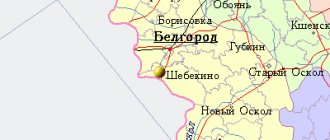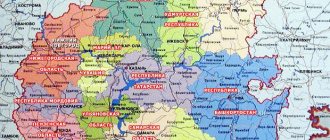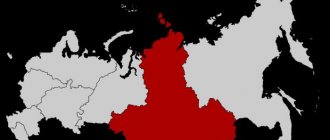The urban district of Kashira is located in the south of the Moscow region, 90 km from Moscow, on the right bank of the Oka River. The administrative center of the Kashira urban district is the city of Kashira.
From various sides it borders with the Stupinsky, Zaraisky districts, the urban districts of Ozyory, Serebryanye Prudy of the Moscow region, and the Tula region.
The territory of the Kashira urban district is 644.68 sq. km. There are 97 settlements in the district, including 7 towns and 89 villages. There are two large railway stations in the district - Ozherelye and Kashira. Domodedovo International Airport is located 80 km from the administrative center.
Kashira is located at the junction point of highways running from Moscow to Voronezh-Rostov, Tambov-Volgograd. According to Moscow Regional Statistics, as of January 1, 2021, 63,576 people live in the Kashira urban district.
In 2021, the city of Kashira celebrated its 660th anniversary. Kashira is one of the few small ancient Russian cities that have preserved their original picturesqueness and spatial openness. The city has the status of a historical settlement in the Moscow region (on September 24, 2013, at a meeting of the Government of the Moscow Region, a resolution was adopted “On approval of the list of historical settlements of regional significance in the Moscow Region.”)
On the territory of the Kashira urban district there are 43 unique archaeological monuments from the Paleolithic to the early Iron Age. Among them are world-famous monuments of the early Iron Age: the Elder Kashirskoye fortification, Mutenkovskoye fortification, Korystovskoye fortification, etc.
More than 30 large and medium-sized industrial enterprises operate in the Kashira urban district. The largest industrial enterprises are: the Kashirskaya State District Power Plant branch of OJSC Inter RAO-Electric Power Plants (electricity production by thermal power plants), TekhInvestStroy LLC (processing of metals and coating of metals), Frito Lay Manufacturing LLC (processing and canning of potatoes) , LLC NPK Kariguz (production of down and feather products), LLC Kashira Car Repair (repair of rolling stock), CJSC Gofron (production of cardboard, corrugated cardboard), OJSC Kashira Metal Structures and Boiler Building Plant (production of boiler equipment and metal structures )
The agro-industrial complex of the Kashira urban district consists of 10 agricultural enterprises, 5 peasant farms and more than 6 thousand personal subsidiary plots.
The main activity is crop production: growing grains and legumes, potatoes, vegetables in closed and open ground, growing mushrooms and industrial crops.
In the Kashira urban district, the length of public roads of local importance is 468.9 km, including 197.68 km with hard surfaces.
Kashira
The unique history of ancient Kashira reflected, as if in a mirror, the general difficult fate of the cities of the country, which was undergoing state formation in difficult conditions of political fragmentation and the harsh Tatar yoke, great unrest and a mercilessly blind peasant revolt. Later, the city knew periods of both provincial vegetation and rapid economic prosperity, survived the hardships of several wars and post-war restoration, Stalinist repressions and the Khrushchev thaw, Brezhnev stagnation and Gorbachev’s perestroika, the collapse of the USSR and the devastation of the early 90s, it witnessed the revival of the new Russia. One of the most ancient cities in central Russia, Kashira, was originally located on the left bank of the river. Oka at the confluence of the Kashirka (Koshiry) river. This area has been used by people for settlement since ancient times, in particular, nearby there is a famous archeological monument of the early Iron Age - the Elder Kashirskoye fortified settlement, which belongs to the Dyakovo culture. At this settlement of the 7th – 4th centuries BC, fortified with a rampart and a moat, archaeologists discovered 22 dwellings sunk into the ground with hearths in the center.
The very first mentions of a settlement called “Koshira”, also as a village, are known from the first (1356) and second (1359) wills of the Grand Duke of Moscow Ivan II the Red - the son of the famous Ivan Kalita, collector of the Russian Land.
Mysterious Koshira
The origin of the name Kashira is not without mystery. It would seem clear that it is connected with the name of the river Kashirka (Koshira). But how, in turn, can we explain it? Linguists believe that Koshira may come from the Turkic word “koshara” - a pen for cattle. However, other, perhaps less scientifically rigorous, versions are also interesting, for example:
- Kashira from Oka-Shira. That is, in this place the Oka River is very wide;
- from the words “mowing”, “mow”, that is, the area where the grass is cut;
- from “porridge,” now an ordinary food, but once a special ritual treat.
At the serif line
In the middle of the 15th century, Kashira was already a city that became an important strategic point on the border abatis line, the defense line from Kolomna to Serpukhov. The garrison of a small log fortress was supposed to protect Russian lands from raids by the Golden Horde, and later from the Crimean Tatars and Lithuanians. During the attacks, the Tatars burned the city more than once, and once, in anticipation of their attack, their own people did the same. In 1480, on the eve of Khan Akhmat's campaign, not having the necessary forces to defend Kashira, Grand Duke Ivan III ordered the evacuation of the townspeople and the burning of the city so that it would not fall to the enemy.
The defensive potential of Kashira increased significantly in 1498, when the stone Trinity Belopesotsky Monastery was built nearby by Abbot Vladimir, a former boyar from Rzhev.
In the first third of the 16th century, the city and a much more powerful wooden-earth fortress, designed taking into account the actions of gunpowder artillery, were completely rebuilt. Slobodkas grew around the fortress walls.
Kashira dragon
At the same time, in Kazan there was a struggle for the establishment of rulers pleasing to Moscow in power, and many Kazan Murzas - Abdul Latyf, Magmet-Amin, Shig-Aley - became governors in Kashira. The Tatar “service princes,” frankly speaking, did not enjoy much love among the Kashirians, but their power did not affect the religious sphere and brought the participation of Kazan residents in joint military operations, which was important for the Moscow princes.
This episode - the reign of the Kazan princes subject to Moscow - was reflected in the coat of arms of Kashira, approved in 1778. In its upper part there is a golden cross in an azure field, and in the lower part - in a silver field there is a black dragon in a golden crown - the coat of arms of Kazan.
Look for the brave in Kashira
In the 16th century, the main enemy of the Moscow state in the south was the Crimean Khanate. Accordingly, raids by the Crimean Tatars on the southern Russian outpost - Kashira - happened often. In this century, the steppe inhabitants devastated Kashira more than two dozen times. To the credit of the Kashira people, they not only sat on the defensive within their own walls. When the Crimean Khan Devlet-Girey besieged Tula in May 1552, a united army, which included a detachment from Kashira, came to the aid of the Tula people. Russian troops, led by the famous Prince Andrei Kurbsky, won a brilliant victory.
Soon the Crimean Tatars, led by Murza Diveya, made a new raid, but near the village of Rastovtsy they were completely defeated by the Kashir army. It is believed that the proverb has lived since that time: “Look for a horse across the river, and a brave nobleman in Kashira.”
Taking advantage of the war waged by the Russian state for access to the Baltic Sea, the Crimean khans increased their raids. The Tatar attack in 1570 brought great devastation to Kashira, but the most devastating thing in its history was the 120,000-strong invasion of Muscovite Rus' by Khan Devlet-Girey in 1571. On the way to Moscow, Kashira was burned to the ground. According to chronicles, only a few dozen houses survived in the city. Many Kashirians were taken prisoner by the Tatars. In 1592, Kashira again found itself on the path of a new brutal raid by the Crimean Tatars, led by the khan’s princes Kalgi-Feti-Girey and Nuraradin-Bakhtu.
Brutal raids of the steppe people. Devastation. Fires. Plague epidemics in 1551-1552 and 1571. Famine at the end of the 16th and beginning of the 17th centuries occurred almost every year. But that was not all that befell Kashira and its inhabitants at the end of the Middle Ages. The new seventeenth century brought the “Great Troubles.”
“Confusion and vacillation” of the Time of Troubles
When the Tatar raids and famine were joined by the growth of boyar exploitation and royal duties, the latter caused widespread discontent with the rule of Tsar Boris Godunov throughout the Russian state. To some extent, this explains the political instability of the Kashirians during the Time of Troubles - the period of great impostors, boyar betrayals, peasant war and Polish intervention.
In April 1605, Tsar Boris dies, and False Dmitry I entered the Moscow state long before. Even before the Pretender arrived in Tula, which he temporarily made his capital, the city governors in Kashira conspired with service people to take action against Moscow. Having later reigned in the capital, False Dmitry aroused the discontent of Muscovites and was killed. The boyars placed Prince Vasily Shuisky on the throne.
In the summer of 1606, an uprising began against the new tsar, led by Ivan Bolotnikov. At first, the Kashirian servicemen, like the population of many other cities, took an active part in it. However, later the Kashira nobles, along with well-born Ryazan residents, frightened by Bolotnikov’s calls to the slaves to deal with their masters, left the rebel camp. Then the second False Dmitry appeared, and again hatred of the tsar pushed the Kashirians to recognize the impostor. The arbitrariness of the Poles who arrived with the “Tushinsky Thief” sobered up the city residents. The difficult time of the Polish intervention began.
The Kashiryans actively participated in the liberation of their native Russian land from uninvited guests; they became part of both the first, unsuccessful, militia of Lyapunov, and the second, victorious one - Minin and Pozharsky.
In a new place
As a result of the turbulent events of the Time of Troubles - uprisings, wars and the ongoing raids of the Crimean Tatars at that time - Kashira fell into complete desolation. The Kashirians submitted a petition to the recently elected young Tsar Mikhail Romanov to move the city from the left bank of the Oka to the opposite, steeper and therefore safer for settlement. Permission was received, and in 1619 the new city with the former name Kashira began to be rebuilt virtually from scratch. After 10 years, a wooden fortress, more powerful than before, with a system of ramparts and other fortifications, was completely ready. A settlement began to grow around it, at first very small, with separate settlements - Rybnaya, Pushkarskaya, Yamskaya, Streletskaya, Zatinnaya.
During the 17th century, Kashira, although it remained a gathering place for military forces, gradually began to lose its defensive significance due to the general political situation. Over time, the professional composition of the inhabitants also changed. There were more and more people in peaceful professions in the city - artisans and merchants. The population of Kashira in the second half of the 17th century, according to census data, was about 600 people and was employed in various trades and especially in the salt trade developed in the region.
Window to freedom
Due to the fact that the border of Rus' moved far to the south, Kashira, losing its military significance, could cease to be a city, just as happened with cities abolished by the Moscow administration or “shredded”, like Dedilov and others.
Paradoxically, the peculiarity of the geographical location - what previously provoked raids by the steppe inhabitants - now contributed to population growth. Here, at the fords across the Oka, the road from Moscow to the Upper Don passed. It no longer had strategic importance for the state, but on the other hand, the fugitive population “fled” along it to the free Cossack south, escaping from the increasing serfdom in the 17th century. Some of the “fugitives” settled along the way and in Kashira and increased the population of the city and its surroundings.
In 1682, after unrest among the Streltsy in Moscow, some of them were exiled to Kashira. The government ordered the local governor Khrushchev to take measures against the spread of unrest by the exiled archers.
Petrine reforms and the first lessons of democracy
The beginning of the 18th century for Kashira, as for the rest of Russia, passed under the banner of Peter the Great's reforms. According to the Decree of Peter I of 1708, provinces were established in the country and the system of local self-government was streamlined. Kashira and the district became part of the Moscow province.
The town's townspeople population consisted of merchants (more than half of the residents) and artisans. The main governing bodies were the town hall with executive functions and the town hall assembly, which elected its representatives to various town hall “services”. Elections in Kashira could last for years. There was often a fierce struggle for “places” between certain influential groups of large merchants and the craft elite, often with the use of assault during meetings to further convince the opponent. Often, after the elections, the offended party began protests with the publication of “hot” facts discrediting one or another chosen candidate. Often even relatives became political opponents, as for example during the election campaign of 1744-1746. Fedor Osin made accusations of financial fraud against Kalina Osin. In turn, Kalina’s supporters accused Fedor of pushing candidates for positions “not from smart people,” and even those who are subject to investigation.
Over time, the power of wealthy merchants (the first and second guilds) in Kashira became so strong that they dared to turn to the authorities with a request to cancel Peter’s decree allowing them to trade without any ranks. The result of such petitions in Russia was in 1778 the decree of Catherine II “On bringing the merchant class into good condition.”
County town
In the 70s In the 18th century, administrative reform was carried out in Russia. One of its tasks was to revise the status of cities. Kashira confirmed her rights as a district town, received a coat of arms, but was transferred from the Moscow province to the Tula governorship (1777), and later to the Tula province (1796).
In 1784, Kashira was badly damaged by a big fire. Half of the buildings in the city burned down, for example, out of 400 courtyards, only 200 remained. This event prompted the county authorities to draw up a regular plan for the construction of a new city, locating it to the south of the old one, with straight streets and rectangular blocks. The main “artery” – Bolshaya Moskovskaya Street – ran from the Oka to the south; it was oriented towards the Belopesotsky Monastery, located on the other bank. In the 18th century, two city squares appeared - Khlebnaya and Cathedral. However, due to the steepness of the slopes, regular planning was not possible everywhere in Kashira.
Pugachev's rebellion and “sober riots”
Of course, the “golden age of Catherine” in the history of Russia is memorable not only for administrative and social reforms, the brilliant victories of Russian weapons over Turkey in the Balkans, in which, by the way, Kashira officers also distinguished themselves, but also for the suppression of the Pugachev rebellion.
When in the summer of 1774 the flames of Pugachev’s peasant war approached the borders of the Moscow province, Kashira district became one of the most explosive. Here, before this, there had been a mass escape of serfs to Pugachev; in the area, peasants attacked landowners and burned estates. Additional military units arrived in Kashira, and the local treasury was evacuated to Moscow. It is difficult to say whether the Kashirians would have massively supported another impostor in the history of Russia. After the capture of Saransk and Penza, Pugachev, contrary to expectations, did not go to Moscow, but sent his troops to the Don, and after some time the situation in Kashira stabilized.
But the population of the city actively opposed the policy of drinking Kashirians encouraged by the authorities. The government required traders to open drinking houses. After the fire of 1784, 8 drinking houses were built in Kashira, and this was with a then population of 1,500 people (data for 1782). In 1789 alone, 264 barrels and 10,834 buckets of wine were sold in the city. Massive discontent among the townspeople later resulted in the so-called “sober riots” that swept across Central Russia.
A century of stability and railway dependence
Kashira entered the 19th century as a small but dynamically developing economic center. The traditional location at the crossroads of routes to Moscow, Tula, Serpukhov, Zaraysk, Kolomna still, as in previous times, made this city an important point of transit trade, mainly in bread, salt, livestock, and timber. Throughout the year, fairs of regional importance were held here several times. Since the end of the 18th century, the first industrial enterprises, semi-handicraft ones, with a large share of manual labor, appeared in Kashira. By 1833, there were already 6 enterprises in the city. Among them is the famous calico factory of the merchant Popov, considered the best in the Tula province. It employed a little more than 300 people, but the machine park - about 50 different mechanisms - was brought by the owner from England. Invited specialists from Belgium also worked at the factory.
The 19th century was the heyday of construction in Kashira - stone and wood. Residential, church, and government facilities were built. The most striking buildings of the first half of the 19th century, made in the style of classicism, belong to church architecture: the Church of the Entry into the Temple of the Blessed Virgin Mary and St. Nicholas the Ratnoy, the Church of the Ascension, the Assumption Cathedral. Buildings in the classicist style were supplemented in the second half of the century with buildings in the pseudo-Russian style.
According to the “List of Populated Places of the Tula Province” for 1859, in the county town of Kashira on the Oka River there were 385 houses, in the city there were 3,092 residents of both sexes - 1,481 males and 1,611 females. In Kashira there were 7 Orthodox churches, a hospital, a postal station, 3 factories, 3 fairs. By the end of the century, the city's population reached 5,600 people. They accounted for 10 medical workers (doctors, paramedics, obstetricians), and 269 children from wealthy segments of the population received education in 6 educational institutions.
In the 1860s. Kashira's economic development slowed down. Transit trade especially suffered a decline. The commissioning of the Ryazan (1863) and Kursk (1866) railways, passing away from the city, caused irreparable damage to the traditional trading activities of the Kashi residents. Alas, the previous land and river routes no longer ensured the presence of Kashira merchants and industrialists on the all-Russian market. The situation changed for the better in 1900, when near the city, 4 km away, the Paveletskaya Railway line passed, connecting Kashira with Moscow, Tambov and the Volga region. However, the beginning of the 20th century found Kashira a provincial and poor city, the bulk of whose population was engaged in small trade, handicrafts and gardening.
The 20th century has arrived
The beginning of the century was stormy for all of Russia, and Kashira was not spared the “storms”. In the Russo-Japanese War of 1904-1905. The 144th Kashira Infantry Regiment distinguished itself by the bravery of its soldiers. In the famous battle of Harbin, he suffered huge losses.
During the years of the first Russian revolution of 1905-1907. In Kashira, the activities of various political forces revived. For example, a great achievement of the Kashira Social Democrats was helping Moscow party members neutralize the soldiers stationed in a neighboring town. They were going to be sent to Moscow to pacify the workers. As a result of the agitation, the soldiers refused to go to the capital. The First World War (1914-1918) began. And again Kashira was glorified by the heroism of the 144th Kashira Infantry Regiment. In August 1915, emerging from encirclement in East Prussia, his officers and soldiers preferred an unequal battle to captivity. In this battle, the famous regiment was almost completely destroyed.
1917 with its revolutions - the February (deposition of Emperor Nikolai Romanov) and October (overthrow of the Provisional Government) - at first did not seem so fateful for the residents of Kashira. The Kashi residents acutely felt what class struggle was the very next year, 1918. Heeding Lenin’s call to the Tula province to save Moscow from famine, the Kashira Bolsheviks carried out surplus appropriation in the city area. In response, peasant unrest broke out. Fortunately, the Civil War spared Kashira.
A striking event in the first years of Soviet power in Kashira was the construction in 1919-1922. Kashira power plant. This facility was the first-born of Lenin’s famous GOELRO plan, and Lenin personally supervised the construction of Kashirka and, in a crisis situation, found building materials and equipment for it. At the time of commissioning, the Kashira thermal power plant became the second largest in Europe. The official opening of the station took place on June 4, 1922; Lenin was unable to attend due to illness.
In the 20s Kashira was part of the Moscow region and became a regional center. The appearance of the power station stimulated the development of the city's economy. In the pre-war decade, a new residential microdistrict No. 2 with multi-storey buildings appeared in Kashira.
Cavalry vs tanks
The beginning of the Great Patriotic War (1941-1945) awakened the patriotic spirit in the Kashiryans and made them remember the centuries-old traditions of the inhabitants of the border fortress on the abatis line. On the eve of the offensive of the fascist troops, the city really turned into a fortress: barricades were built on the streets, and defense lines were built on the outskirts of anti-tank ditches, hedgehogs, and wire fences. Townspeople en masse joined the extermination battalions. At the Kashirskaya State District Power Plant, although some of its equipment had been evacuated, armed workers were preparing to repel the enemy.
On November 24, 1941, as a result of the German army breaking through the front line near Tula, the advanced units of Guderian's tank army reached Kashira and stood just a few kilometers from it. At the same time, the city was subjected to massive aerial bombing. However, the German offensive floundered. On November 27, a counteroffensive by the cavalry corps under the command of General P. A. Belov followed. A few days later, during the offensive operation of the Red Army near Tula, the Nazis were finally driven back from Kashira.
The rise of Kashira
Having gone through the most difficult period of post-war restoration of the national economy, Kashira in the 60-70s. The twentieth century ushered in a period of very intensive development in its history. First of all, this affected industry.
- In 1946, a metal structures plant was created, which gradually became a leader in the supply of unique structures and equipment for hydro- and thermal power plants in the USSR and many other countries.
- 1963 Kashirskaya State District Power Plant was modernized.
- 1963 Creation of a foundry. Soon this enterprise became one of the leading enterprises in the USSR in its industry.
- 1965 The reinforced concrete products plant was reconstructed and expanded.
- 1965 An experimental factory for cardboard and paper products came into operation.
- 1960-1970s mastered new types of agricultural and road engineering.
- 1976-1980 The Kashira furniture factory has been modernized.
In the second half of the twentieth century, Kashira experienced a construction boom.
Microdistrict No. 2 was being built up. In 1962, the third microdistrict was built, and the next year the city of Novokashirsk became part of Kashira. Beginning of the 21st century.
Residents of Kashira look to the future with hope and optimism. Both your beautiful city and your best country in the world.
Territorial departments of the city district[ | ]
The structural divisions of the city district administration are 7 territorial departments[18]:
- Territorial department for the city of Kashira. 142903, Kashira, st. Lenina, 2.
- Territorial department Ozherelevsky. 142921, Ozherelye, st. Pionerskaya, 17.
- Territorial department Bazarovsky. 142918, Zendikovo village, st. Bannaya, 6A.
- Territorial department Domninsky. 142925, Kamenka village, st. Central, no. 9.
- Territorial department Znamensky. 142941, Novoselki village, st. Central, no. 12.
- Territorial department Koltovsky. 142913, Taraskovo village, st. Komsomolskaya, 24.
- Territorial department Topkanovsky. 142930, Bogatishchevo village, st. Novaya, no. 10.








